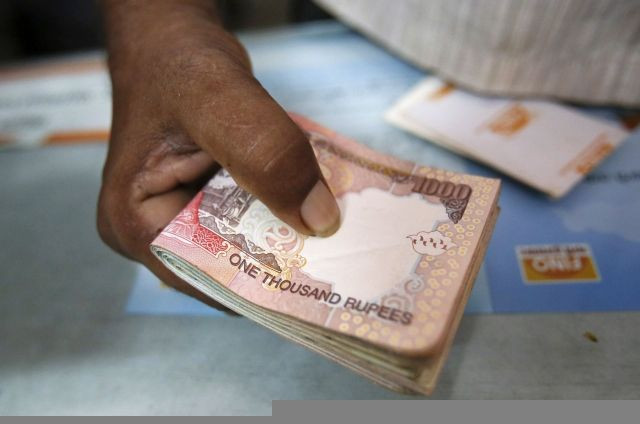Indian Rupee Hits New Record Low Against Dollar, BSE Sensex Losses Over 1.5 Percent

India's currency hit another record low against the dollar, on Monday, despite the government’s recent efforts to arrest the rupee's free fall, as the economy is struggling under the cascading effect of the decline in the value of rupee and a slow economic growth.
India’s domestic currency hit a new low of 63.30 against dollar, down 165 paise, or 2.7 percent, from its previous close of 61.65 on Friday, in intraday trade at the interbank foreign exchange market, on Monday. It recovered marginally to end the day at 63.14. The rupee's fall was attributed to a strengthening of the dollar in overseas markets and continuing foreign fund outflows from the country.
Foreign institutional investors, or FIIs, concerned over India’s slow economic growth and widening current account deficit, have been withdrawing money from the markets. FIIs' net sales of Indian stocks and bonds in July stood at more than $3 billion, according to a Bloomberg report.
"Rupee will continue to trade weak as recent policy decisions by the RBI have forced FIIs to withdraw money from the market. Moreover a weak equity high dollar demand from importers and strong dollar in the overseas market will put pressure on the rupee," Pramit Brahmbhatt, CEO, Alpari India told Moneycontrol.com, earlier on Monday.
In recent weeks, the Reserve Bank of India, or RBI, had taken several measures to stem the currency's free fall, including placing limitations on foreign fund outflows and raising its interbank lending rates, while the Indian government had announced a series of measures to curb gold imports, and to improve foreign fund inflows.
However, the fall in the rupee, which has lost more than 15 percent against the dollar in 2013, has had a cascading effect on the economy, which grew at 4.8 percent in the last quarter -- its slowest pace in a decade.
The rupee's decline has put pressure on India’s current-account deficit, which widened to 4.8 percent of gross domestic product in the fiscal year 2011-12, compared to the RBI’s comfort level of 2.5 percent. The country’s headline inflation soared to 5.79 percent, a five-month high, in July.
“Slow growth, high inflation, a high fiscal deficit and high current-account deficit all point to the inescapable conclusion that India’s problems are deep and structural,” Prasanna Ananthasubramanian, an economist at ICICI Securities Primary Dealership Ltd, told Bloomberg News.
The decline in the rupee also triggered a sell-off in the equity markets. The benchmark BSE Sensex lost nearly 4 percent, or 769 points on Friday -- its biggest fall in four years, after the rupee hit a record low of 62.40 on that day. On Monday, the Sensex dropped more than 1.50 percent, or about 290 points, after the fresh decline in the value of the currency.
In the bond markets, the yield on India’s 10-year government bond rose by 35 basis points to 9.23 percent -- a five-year high.
© Copyright IBTimes 2024. All rights reserved.






















